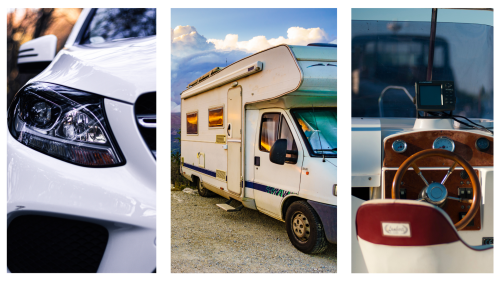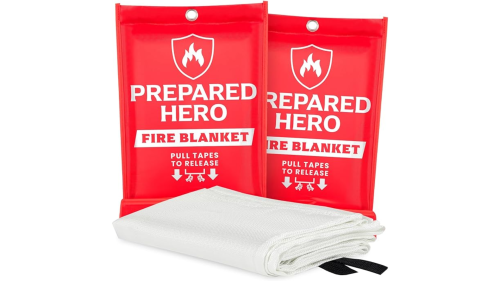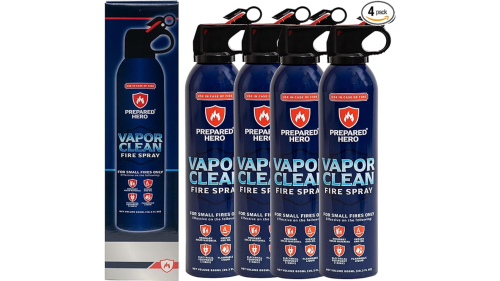Is your fire company educated and trained to tackle chimney fires?
In late fall, when the leaves turn, a brisk chill in the air appears and that burned dust smell from freshly fired furnaces comes a rise in chimney fires. Better start training now before your first chimney fire strikes.
Chimney fire size-up
Chimney fires can burn explosively and are generally noisy and dramatic enough to be detected by neighbors or passersby. Victims of them compare the sound of the fire to a low rumbling noise, like a freight train or a low-flying airplane.
Flames have been known to shoot from the top of the chimney, accompanied by dense smoke. The first indication of a chimney fire is usually the noise — a roaring sound that grows louder as the fire intensifies, reaching temperatures of up to 2,000 degrees F.
The volume of fire, smoke and heat from this type of fire can push hot gases out of existing cracks in the chimney mortar or cause internal connectors to fail. When viewed from the exterior, large smoke volume and sparks and fire can extend several feet above the chimney.
Creosote build-up makes a chimney fire possible
However, not all chimney fires are visible from the exterior. Some are slow-burning fires, lacking the levels of air or fuel found in the large, eye-catching visible fires.
But even these have high temperatures that can cause as much damage to the chimney structure and nearby combustible parts of the house as the more dynamic fires. In basic terms, fireplaces and wood stoves are designed to allow for fires in a safe, controlled fashion, with the chimney providing expulsion for the by-products of combustion.
These substances exit the fireplace and wood stove, and gradually rise up into the relatively cooler chimney, where condensation occurs. But as the products cool, they can coalesce into a sticky substance, creosote, that adheres to the inner lining of the chimney walls.
Creosote is black or brown in appearance with a crusty or flaky consistency. It can be tarry, drippy and sticky or shiny and hardened. Often, all forms will occur in one chimney system.
Regardless of the physical presence of the creosote, it is highly combustible. If the build-up of the volume of creosote is sufficient, it is possible to start a chimney fire. Although any amount of creosote can burn, professional chimney sweeps are concerned when creosote builds up in sufficient quantities to sustain a long, hot, destructive chimney fire.
All chimneys are essentially manufactured in a similar fashion. The by-products of the fire exit upward by convection through the chimney flue. This is generally known as the fire’s draft.
There are several factors that can lead to a creosote build-up, which residents in your communities should be aware of, including not maintaining a proper temperature inside the flue, burning wood that is not dried thoroughly and failure to clean the chimney on a regular basis.
The size of the fire, the construction style of the fireplace and chimney and its age will add to the possible extension of the fire.
Chimney fire tactics for firefighters
As with any fire, life safety should be the primary concern. Luckily, the majority of chimney fires allow for occupants to exit under their own power. This vastly reduces the impact for completing an all-clear on a primary. Ensure the occupancy is fully evacuated. And because all fires are unpredictable, firefighters must wear full PPE, including SCBA.
Chimney fires should be dispatched as a full-structural response until the size, location and access impacts are assessed. Perform a good size-up to ensure the exact location and size of the seat of the fire is confirmed.
You will not always have fire visible from the flue on arrival. Only cancel other responding apparatus when you have made a good evaluation of the chimney and the surrounding areas.
Stretch a preconnect line to the front of the structure in case the fire is larger than initially anticipated. Establish command, track your personnel and set up a safety officer when able to do so. Strategy goals for a chimney fire consist of:
- Extinguishing the fire
- Limiting fire extension
- Ventilation as needed
- Overhaul to prevent rekindle
- Salvage
Check the carbon monoxide readings in the house with a CO detector. And remember as the fire burns, it can cause failure of internal support construction features allowing for extension from the flue into walls, ceilings, attics and other hidden construction elements.
As soon as the determination for CO is done, send a recon team directly to the attic and make sure that the fire has not extended into this space or the cockloft. Inspect the firebox itself and as much of the chimney inside of the home as possible. Thermal imaging cameras are significantly helpful during this time.
If the fire is contained within the flue system, move on to chimney fire-specific extinguishment methods.
- Use the proper ladders when it is required to access the roof.
- Access the chimney area and remove the chimney cap, bird screens or spark arrestors.
- Visually inspect the chimney with a mirror to determine the extent of the fire.
- Be cognizant of the dead load you are adding to a roof structure, especially if there has been a significant amount of snow loading the roof support recently.
Chimney fires rarely occur when the weather is good, so watch your footing in snow or freezing rain conditions.
Chimney fire extinguishing methods
There are a few different methods of extinguishing a chimney fire, though all require an ABC dry chemical extinguishment agent. Regardless of the manner of extinguishment used, you will greatly increase your ability to operate near it if the fire in the firebox is extinguished.
Unload the wood from the firebox, place it in a metal salvage bucket, and unload outside the residence. Continue to do this until all of the wood and hot ashes have been emptied from the firebox. Unload the bucket outside of the residence, and wet down with a hose, pressurized water can or pre-staged attack line.
Make sure the wood and hot ashes are no longer burning — you don’t want the wood or house to catch on fire after you leave. Once the fire has been put out in the firebox (generally with a pressurized water extinguisher), close the draft to reduce the amount of air feeding the fire in the flue.
As for chimney fire extinguishment methods, here are three.
- Bomb from the top
- Attack from the bottom
- Blow it out
1. Bomb from the top
Use a dry chemical powder in sealable plastic bags. This can be dropped from the top of the chimney through the flue top you have already opened. Based on the size of the flue fire, you can drop a few bags through it. As the bags drop, their weight will carry them down toward the draft stop.
The bags will then melt, releasing their dry powder into the flue. Once the powder is released, it is light enough to be carried upward and successful extinguishment should occur.
2. Attack from the bottom
This method requires the brief opening of the draft stop, which may temporarily accelerate the size of the fire. Coordinate the opening of the draft stop with the insertion of the nozzle of a dry chemical extinguisher past the draft stop and discharge into the flue in an upward direction.
The heat of the fire will carry the extinguishment agent upward to assist with putting the fire out. This method has been known to cause a bit of a mess inside the house from collateral extinguishment powder travel, so consider placing salvage tarps down before you begin. In addition, a two-story structure may require both methods due to the length of the flue.
3. Blow it out
The method is my favorite. It requires some prep ahead of the call, but it is well worth the work. Cut a piece of plywood about 4 x 4 feet and mount two handles on the same side, about a foot in from two parallel sides in the middle.
This method requires a positive-pressure fan to work well. Prior to using the PPV, ensure your team has located the seat of the fire and is not concerned about fire outside the flue or firebox. Ensure all other openings in the structure have been closed with the exception of the opening the PPV will be using.
Place the plywood in front of the firebox and coordinate the start of the PPV fan. Once the PPV fan has been started, slide the plywood to allow for a small opening (about 1 foot wide) on one side or the other. Discharge the extinguisher into the opening and let the PPV fan push the extinguishment agent into the flue area.
Keep the plywood open for about a minute, close the draft, stop and reassess the fire with a thermal camera. In all cases, confirm the fire has been extinguished by visual, infra-red or thermal camera methods.
Some departments use a chimney chain that is dropped from the top of the flue. This device is used to knock creosote from the walls of the flue onto the bottom of the firebox. It requires personnel to work from the roof and increases the risk associated with the completion of the scenario.
Consider working from a platform to increase your safety profile if you must perform this maneuver. Our department does not carry this piece of equipment and instead confirms extinguishment of the fire and lack of fire extension, and then advises the homeowners to have a chimney cleaning company respond to clean out their fireplace/flue and have it inspected before setting another fire in their fireplace.
The majority of chimney fires will be successfully extinguished using one or more of these methods. However, there are other methods out there. Commercially produced chimney nozzles provide low-volume water. This also causes an ash and creosote-laden water puddle to form on the bottom of the firebox and generally the floor in front of it.
Customer service and cleanup
Handlines should be used only as a last resort as they can permanently damage existing masonry or metal flue liners. Maximize your customer service skills by taking using floor runners and fire-retardant salvage covers near the fireplace during salvage and overhaul. Careful cleanup can earn your department valuable praise from the homeowners
Many fire departments run chimney fires on a regular basis when the weather turns cold. Chimney fires are generally simple to manage if you take the right actions. Be familiar with how your department prefers to have a chimney fire extinguished. And if you have a different method of extinguishing chimney fires, I would love to hear of them.
This article, originally published October 10, 2008, has been updated with additional resources.

















